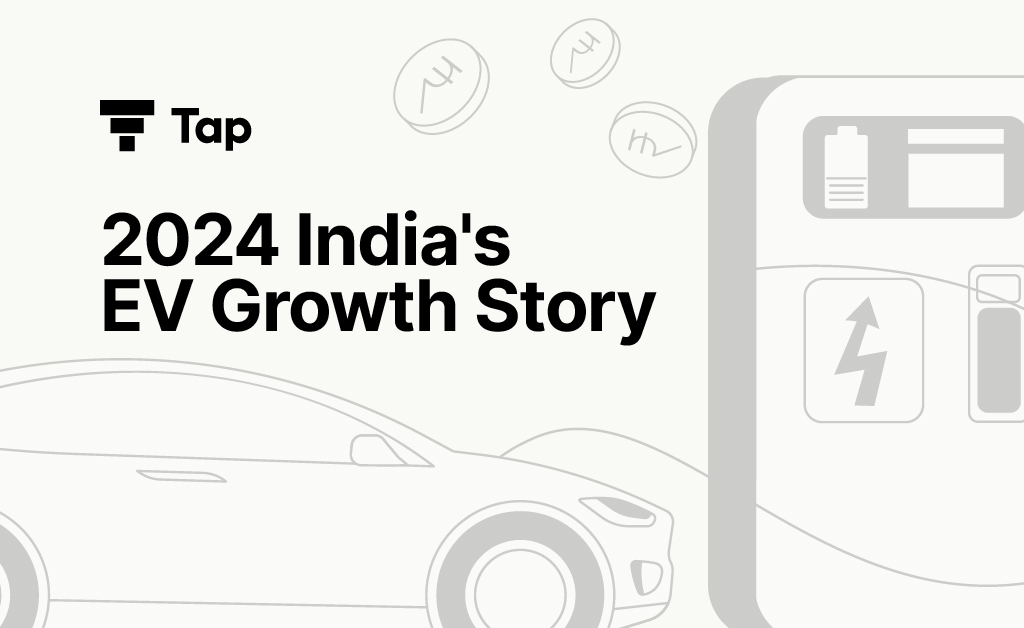Exploring the Indian EV Market: Growth Trends and Opportunities

Investors are increasingly seeking diversification and higher returns, particularly in sectors aligned with global initiatives to reduce carbon emissions, such as renewable energy and electric vehicles (EVs).
Transportation-related pollution has long been a pressing issue, prompting a shift from fossil fuels to alternative energy sources like compressed natural gas (CNG) and ethanol blends. Now, the spotlight is on EVs as a sustainable solution to curb carbon emissions and combat climate change.
EV Market in India: Outlook for 2024
As we enter 2024, the Indian EV market is poised for significant growth and transformation. Key indicators point to a surge in EV adoption, driven by factors such as government support, declining battery costs, and increasing environmental awareness.
*Government Support:* With an ambitious target of achieving 30% electric vehicle sales by 2030, the Indian government is implementing robust policies to incentivize EV adoption. Substantial subsidies, tax breaks, and infrastructure investments aim to propel the EV market share in India beyond its current 3%.
*Major Players:* Leading companies like BluSmart, Tata, and MG Motors are making strategic investments to capitalize on the growing EV market in India. Collaborations, such as the recent partnership between MG and Sajjan Jindal of the JSW group, are expected to drive innovation and accelerate market expansion.
*Charging Infrastructure:* To address range anxiety and facilitate long-distance travel, India plans to deploy 17,000 fast-charging stations by 2024. This infrastructure development is a critical step towards making EVs more accessible and convenient for Indian consumers.
*Ola Electric IPO:* The highly anticipated IPO of Ola Electric in 2024 is set to attract significant investment and reshape the Indian EV landscape. With a targeted valuation of $7-$8 billion, this IPO could be a game-changer for the EV market share in India.
Union Budget and EV Initiatives:
The upcoming Union Budget in February 2024 is expected to further bolster the EV market in India. Potential measures include reduced GST rates on lithium-ion batteries, income tax deductions for EV purchases, and incentives for companies investing in EV technology and infrastructure.
The government’s allocation of $1 billion to the FAME-II scheme underscores its commitment to accelerating EV adoption. Extension of this scheme beyond March 2024, with increased funding, will provide continued support to EV manufacturers and buyers.
Investment Opportunities in the Indian EV Market:
For investors, the Indian EV market presents lucrative opportunities for growth and diversification. Investments in battery manufacturing, renewable energy, and charging infrastructure are expected to yield significant returns as EV adoption continues to soar.
Battery technology remains a key area to watch, with breakthroughs in range and charging speed driving further EV adoption. Beyond cars, electric trucks, buses, and motorcycles are gaining traction, promising to revolutionize the transportation industry and mitigate environmental impact.
In conclusion, the Indian EV market offers promising prospects for investors seeking to align their portfolios with sustainable and high-growth sectors. With supportive government policies and rapid technological advancements, the EV revolution in India is set to reshape the future of transportation.
FAQs About the Indian EV Market:
1. What is the current market share of EVs in India? The current market share of electric vehicles (EVs) in India is approximately 3%. However, with the government’s ambitious target of achieving 30% EV sales by 2030, significant growth is expected in the coming years.
2. How are government policies supporting the growth of the Indian EV market? The Indian government has implemented robust policies to incentivize EV adoption, including subsidies, tax breaks, and infrastructure investments. These measures aim to accelerate the transition towards sustainable transportation and reduce carbon emissions.
3. Which companies are leading the EV market in India? Major players in the Indian EV market include BluSmart, Tata, and MG Motors, among others. These companies are making strategic investments and partnerships to capitalize on the growing demand for EVs in India.
4. What role does charging infrastructure play in the development of the Indian EV market? Charging infrastructure is crucial for addressing range anxiety and promoting widespread EV adoption. India’s plan to deploy 17,000 fast-charging stations by 2024 is expected to make EVs more accessible and convenient for consumers.
5. How will the Ola Electric IPO impact the Indian EV market? The anticipated IPO of Ola Electric is expected to attract significant investment and reshape the Indian EV landscape. With a targeted valuation of $7-$8 billion, it could further accelerate the growth of the EV market in India.
6. What initiatives can investors consider to tap into the Indian EV market? Investors can explore opportunities in battery manufacturing, renewable energy, and charging infrastructure to capitalize on the growth of the Indian EV market. These sectors are expected to yield significant returns as EV adoption continues to rise.
7. What factors should investors monitor to stay informed about the Indian EV market? Investors should keep an eye on developments in battery technology, government policies, and partnerships between EV manufacturers and other industry players. Breakthroughs in these areas could have a significant impact on the future of the Indian EV market.
